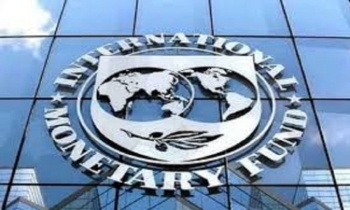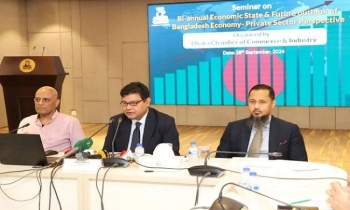Raw cotton imports rise by 38% responding to extra work orders
Jannatul Ferdushy || BusinessInsider

Photo: Representational
Import of raw cotton has increased by 38 percent during July-October period as the apparel makers started buying yarn from the home market instead of importing.
The industry insiders said the work orders have been steadily increasing and getting to normalcy amid the Russia-Ukraine war that had jolted the clothing industry for several months.
According to Bangladesh Bank data, raw cotton import has increased by 38 percent, textile by 2.40 percent, staple fibre by 19.5 percent and dyeing chemicals 9.9 percent. However, yarn imports fell by 39 percent during this period.
The BB data shows, raw cotton imports aggregated $1.8 billion, textile and therefore $2.87 billion, staple fibre $517 million, dyeing chemical $316 million and yarn $1 billion.
At the same time of corresponding year import of raw cotton was $1.30 billion, textile and therefore $2.81 billion, staple fibre $433 million, dying chemical $314 million and yarn $1.60 billion.
“Demand for local fabric has increased slightly as apparel makers are not buying the raw materials from the international market due to the current dollar crisis. Besides, the price has declined, too,” Fazlul Haque, vice president of Bangladesh Textile Mills Association (BTMA) told Business Insider Bangladesh.
However, yarn import for July-January period of the ‘22 fiscal year had increased by 165 percent to $3 billion which was $2.47 during July-December of the ’21- ‘22 FY. Import of raw cotton had been estimated at $2.48 billion and $2.02 billion respectively, the central bank data shows.
The Russia-Ukraine war broke in February, causing a blow to Bangladesh’s forex reserve. And, therefore, the RMG exporters stopped buying yarn from the global market. As a result, local yarn production shot up alluring raw cotton imports.
“Due to abnormal price in domestic market, we the bonded warehouse holders were buying more yarn from international market,” Muhammad Hatem, Executive President of Bangladesh Knitwear Manufacturers and Exporters Association (BKMEA) told the Business Insider Bangladesh.
In addition, those small and medium-sized factories that don’t have their warehouse licences were compelled to procure high-priced yarn from the local market. In the post-Covid situation, work orders of readymade garment have been increased to the optimum level but the garment makers cannot basket the profit because of high yarn price, Hatem said.
Mohammad Ali Khokon, president of the Bangladesh Textile Mills Association (BTMA), said, “Cotton prices in Bangladesh depend on import rates. However, some countries such as India, Turkey, and many others produce their own cotton.
“This is why they can sell at low prices. However, our prices are not that high compared to theirs.”
























